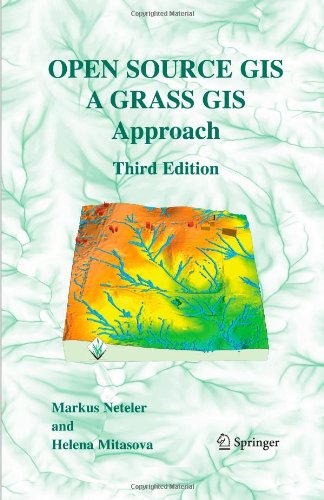Open Source GIS: A Grass GIS Approach pdf
Par ruiz michell le mercredi, juillet 6 2016, 16:02 - Lien permanent
Open Source GIS: A Grass GIS Approach. Helena Mitasova, Markus Neteler

Open.Source.GIS.A.Grass.GIS.Approach.pdf
ISBN: 1441942068,9781441942067 | 417 pages | 11 Mb

Open Source GIS: A Grass GIS Approach Helena Mitasova, Markus Neteler
Publisher: Springer
Download Open Source GIS: A Grass GIS Approach. This GIS book features many useful topics. With this third edition of Open Source GIS: A GRASS GIS Approach, we enter the new era of GRASS6, the first release that includes substantial new code developed by the International GRASS Development Team. It's used across the statistical spectrum to fit smoothed boundaries to observed data (with a parameter you decide arbitrarily, or solve using a few different approaches). GRASS GIS has snazzy kernel density estimation built-in to its core framework. One approach You will likely find that many if not all of your GIS business requirements can be accomplished by using free open-source GIS software such as the GRASS/Quantum GIS combination, and any remaining tasks covered with your preferred commercial GIS product. Product DescriptionThoroughly updated with material related to the GRASS6, the third edition includes new. For now, let's focus on generating KDE's and contours using open-source tools. Following on from my previous article, what are some practical and cost-effective approaches to encourage the use of Geographic Information Systems (GIS) in your company or organisation? Kernel Density Estimates in GRASS GIS. Organization: OSGeo - Open Source Geospatial Foundation GRASS GIS has many imagery related processing capabilities, but the field is rapidly developing and many techniques are not yet implemented. Kernel Density Estimation is a fancy way of demonstrating clusters and potential outliers. This approach can easily be implemented on any scale using a selection of tools provided by GRASS GIS, one of the most powerful Open Source GIS platforms. Helena Mitasova, Markus Neteler. Open Source GIS: A Grass GIS Approach.